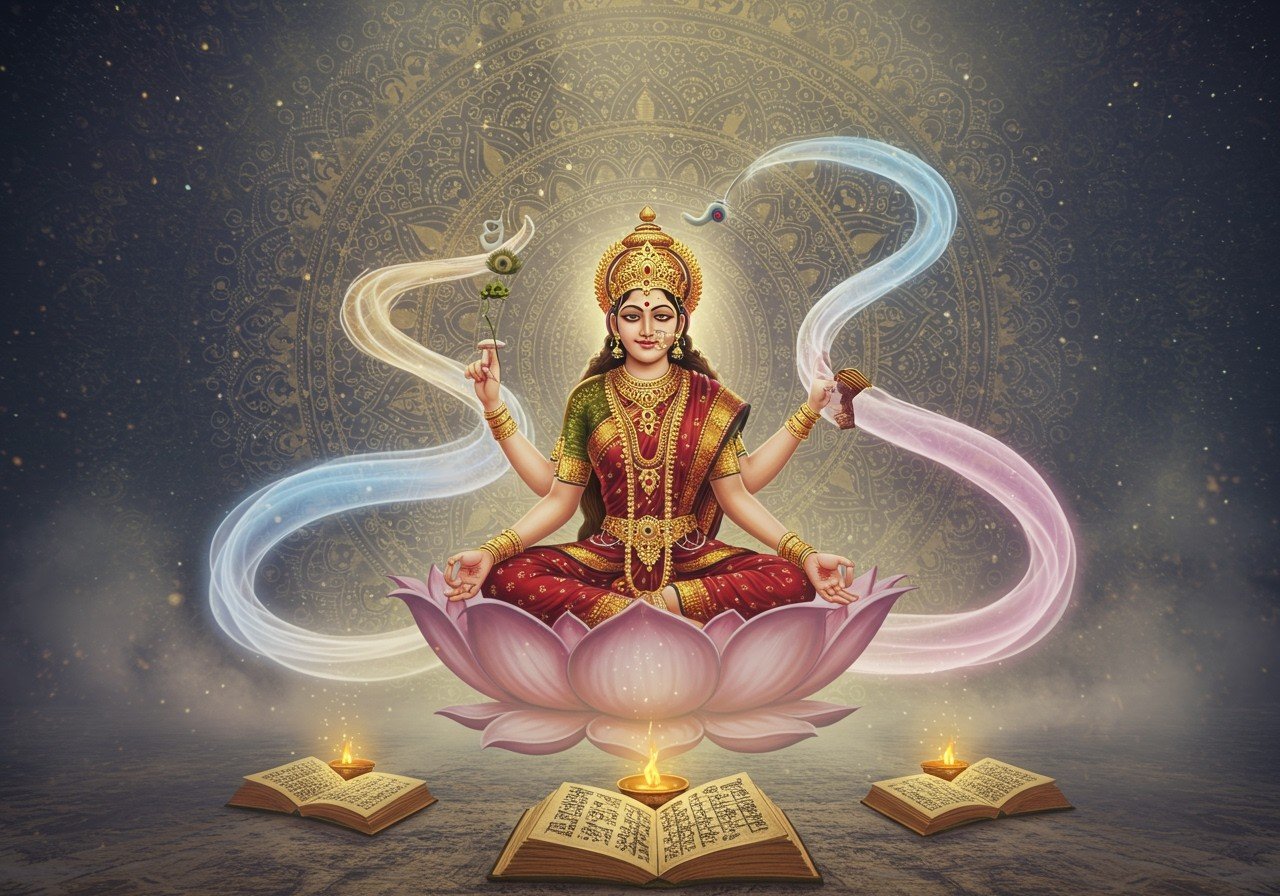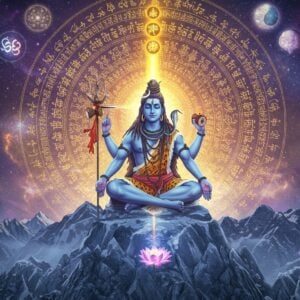
The Sita Upanishad is a profound spiritual text that has captivated scholars and devotees for centuries. As of 2025, its meaning and interpretations remain deeply relevant, offering valuable insights into Hindu philosophy and spirituality. Known as the essence of spiritual knowledge, the Upanishads represent the concluding part of the Vedas. Sita, the central figure of this Upanishad, is revered as a symbol of purity, devotion, and strength within Hindu mythology.
Understanding the Sita Upanishad
The Sita Upanishad occupies a unique position within the broader collection of Upanishadic literature. Its origins are deeply rooted in Hindu culture, exploring themes such as dharma (righteousness), bhakti (devotion), and the feminine divine. This focus sets it apart from other Upanishads.
The text is rich in symbolism, particularly regarding Sita’s role. Her presence signifies strength and purity, embodying ideals that resonate with contemporary spiritual seekers. The teachings within this Upanishad address both complex philosophical concepts and provide practical guidance for spiritual growth and self-discovery.
In modern interpretations, the Sita Upanishad plays a crucial role in understanding the nuances of Hindu philosophy. Its focus on dharma and devotion continues to influence spiritual practices even today, making it particularly relevant for individuals striving to balance tradition with the demands of modern life. You can further explore related concepts in our articles on Dharma in the Ramayana and Timeless Lessons from the Ramayana.
The Sita Upanishad and Its Core Meaning
The Sita Upanishad, a medieval Sanskrit text, is classified as one of the minor Upanishads of Hinduism. Associated with the Atharva Veda, this text is especially revered within Vaishnava traditions. It extols Goddess Sita, portraying her as the Ultimate Reality, or Brahman, the source and foundation of all existence.
Sita as Brahman
The Upanishad identifies Sita with primordial Prakriti, the fundamental principle of nature. Her three powers – will (iccha), action (kriya), and knowledge (jnana) – are believed to manifest in daily life, guiding individuals toward spiritual awakening.
- Will (iccha): This represents the desire and intention that drives action. It is the seed from which all manifestations arise. The Sita Upanishad explains how cultivating pure intentions leads to positive outcomes, aligning with dharma.
- Action (kriya): This signifies the manifestation of will into tangible form. Right action, in accordance with dharma, is essential for spiritual progress. The Upanishad emphasizes the importance of mindful actions and their karmic implications.
- Knowledge (jnana): This is the understanding of the true nature of reality. Through jnana, one transcends ignorance and attains liberation. The Sita Upanishad emphasizes the pursuit of wisdom and the realization of one’s true self.
All-Encompassing Nature
Sita is depicted as all-encompassing, embodying all of creation, both good and bad, gods and demons, cause and effect. She represents the unity of the material and spiritual realms, embodying both Maya (the changing reality) and Brahman (the unchanging truth).
- Unity of Opposites: Sita’s all-encompassing nature harmonizes seemingly contradictory forces. She embraces both good and bad, light and darkness, demonstrating that these dualities are essential aspects of a unified whole.
- Transcending Duality: By embodying both Maya and Brahman, Sita bridges the gap between the illusionary world and the ultimate reality. This emphasizes that true liberation lies in recognizing the underlying unity beneath all apparent differences.
Symbolism of Her Name
The Upanishad provides a folk etymology for the name “Sita.” Each letter carries symbolic weight: “S” for Satya (eternal truth), “i” for Maya (illusion in unchanging form), and “ta” for the goddess of speech connected with Brahman.
- Satya (Truth): The “S” in Sita represents Satya, the unchanging and eternal truth that underlies all existence. This connection signifies her divine nature and her embodiment of ultimate reality.
- Maya (Illusion): The “i” represents Maya, the illusionary world of appearances. Its presence in Sita’s name indicates that she encompasses both the real and the unreal, the manifest and the unmanifest.
- Speech (Vak): The “ta” connects Sita to Vak, the goddess of speech. This signifies the power of divine sound and the ability to express and manifest through language. It highlights her role as the vocal form of the Vedas, which are sacred sounds believed to be the source of creation.
Cosmic Origins
The text connects Sita to the earth, stating that she emerged from the tip of a plough. This symbolizes her close association with Prakriti (nature). She is described as all-pervading, the illuminator of all worlds.
- Connection to Earth: Sita’s emergence from the plough’s tip symbolizes her deep connection to the earth and its life-sustaining power. This image emphasizes her role as the embodiment of Prakriti, the source of all material creation.
- Cosmic Illumination: Sita’s presence is described as a radiant light that illuminates all worlds. This symbolizes her divine wisdom and her ability to dispel ignorance and bring clarity to the minds of seekers.
Self-Realization
The Sita Upanishad emphasizes that the cosmos is Atman (soul) residing within the heart. Awareness and self-realization are achieved through Vichara (self-inquiry) and Samadhi (the highest stage of meditation). To deepen your understanding of self-realization, explore our blog post on Finding Your Guru.
- Atman as the Cosmos: The Upanishad teaches that the individual soul (Atman) is not separate from the universal consciousness (Brahman). This emphasizes the interconnectedness of all beings and the inherent divinity within each individual.
- Vichara and Samadhi: The path to self-realization involves Vichara, or self-inquiry, which helps to dismantle the illusion of a separate self. This leads to Samadhi, a state of deep meditative absorption where one experiences unity with the divine.
Vedic Representation
Sita is portrayed as the vocal form of the four Vedas. These Vedas are believed to have originated from various Vedic schools, further highlighting her unifying role in Hindu scripture. Explore our detailed exploration of Hindu Scriptures for more information.
- Voice of the Vedas: Sita’s identification as the voice of the Vedas signifies her profound wisdom and authority. She is the embodiment of sacred knowledge, the source from which all Vedic teachings flow. This representation reinforces her divine status and her crucial role in Hindu cosmology.
- Unifying Force: By embodying the voice of all four Vedas, Sita unifies the different schools of thought within Vedic tradition. This signifies her role as a central point of convergence for all spiritual seekers, regardless of their specific lineage or practice.
Poojn.in: Supporting Your Spiritual Journey with the Sita Upanishad
The Sita Upanishad holds strong connections to the sacred Ashoka tree, known as Sita-Ashok in Sanskrit. Poojn.in offers authentic ritual items to enhance your connection with this sacred text:
- 100% Pure Ashoka Chal (Bark): Available in various quantities (100g, 250g, 1kg), our pure Ashoka bark (₹20.00 – ₹369.00) is ideal for rituals mentioned in the Sita Upanishad. This bark comes from the sacred Saraca asoca tree, known throughout India by names such as Anganapriya and Hemapushpa.
- Complete Puja Samagri: Explore our comprehensive selection of 186+ puja items, encompassing everything required for performing rituals connected with the Sita Upanishad.
- Specialized Puja Kits: We offer ready-made puja kits with carefully curated items according to traditional specifications. These kits simplify the process of gathering authentic materials for your spiritual practice. Our camphor and alta are also popular choices.
- Holy Utensils: Browse our selection of 40+ traditional utensils, essential for proper ritual conduct as prescribed in the scriptures. These utensils add authenticity and reverence to your spiritual practices.
Visit www.poojn.in to discover our full range of authentic puja items. We deliver across India, ensuring easy access to traditional items while preserving their sanctity and quality.
[Note: Product prices are subject to change. Please visit our website for the most up-to-date pricing.]
Embracing the Timeless Wisdom of the Sita Upanishad
Exploring the Sita Upanishad opens a window into a world of spiritual wisdom and rich cultural heritage. It encourages us to view Goddess Sita not merely as a mythological figure but as a guiding force in our lives. Her teachings illuminate the balance between material and spiritual realms, inspiring us to seek truth and self-realization. By understanding her profound significance, we can find the strength and inspiration to navigate modern life while honoring the timeless traditions that shape our identity. Let the teachings of the Sita Upanishad guide you on your path towards eternal wisdom and love.
FAQs on the Sita Upanishad
What is the Sita Upanishad? The Sita Upanishad is a revered scripture belonging to the larger collection of Upanishads, ancient Indian texts exploring profound philosophical and spiritual concepts. It specifically focuses on Sita, a central figure in the epic Ramayana, and her divine significance.
Why is the Sita Upanishad important? This Upanishad is important due to its spiritual and philosophical depth. It highlights Sita’s embodiment of virtues like devotion, strength, and purity, offering inspiration and guidance for spiritual seekers.
Where can I find more resources on the Sita Upanishad? You can find more resources online and in libraries. Reputable websites specializing in Hindu scriptures often offer PDFs and translations. Many scholarly books delve into the Upanishad’s interpretation and significance. Consider also our related blog posts on Ramayana Characters and Life Lessons and Ramayana Women: Strength and Modern Relevance.


